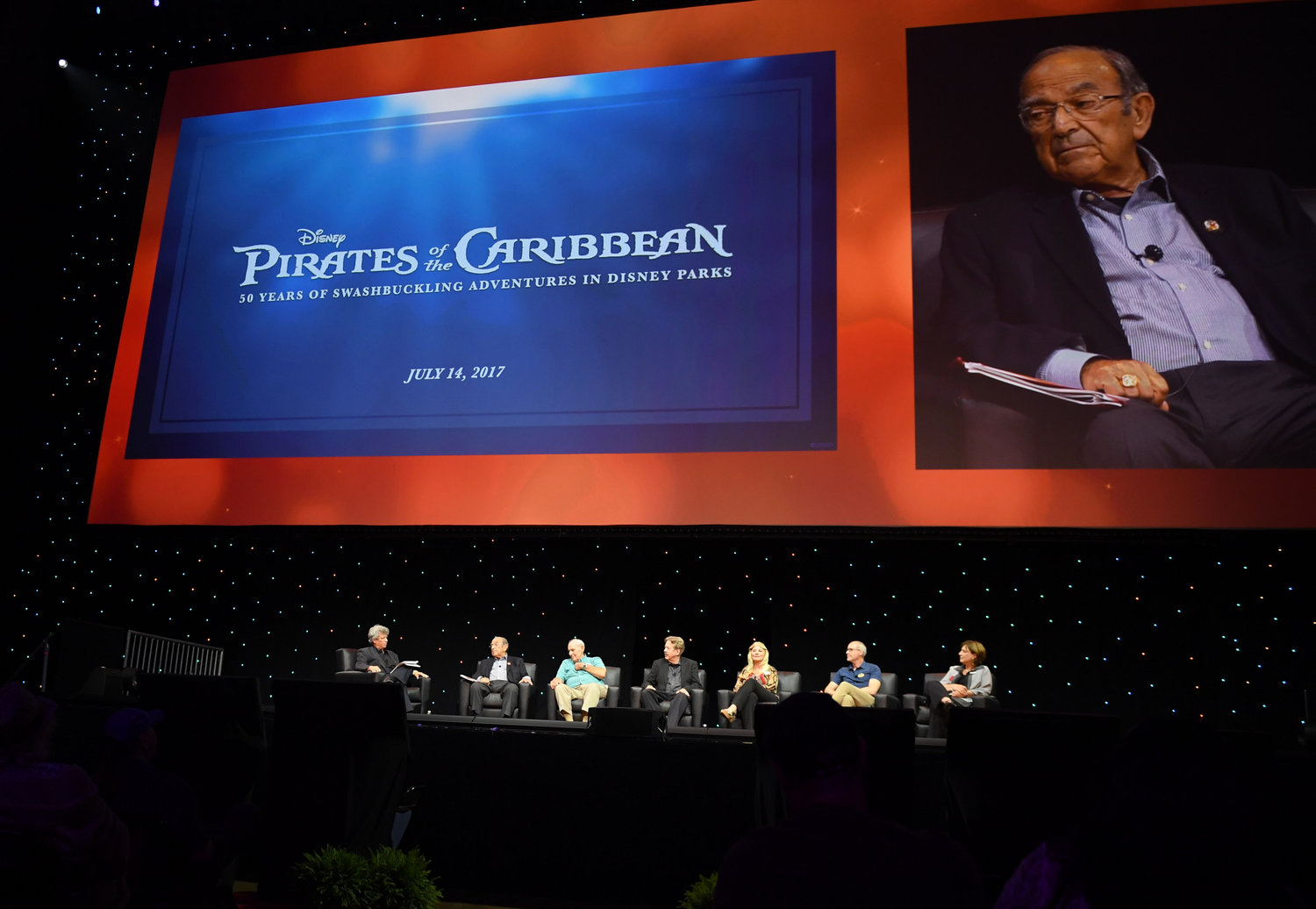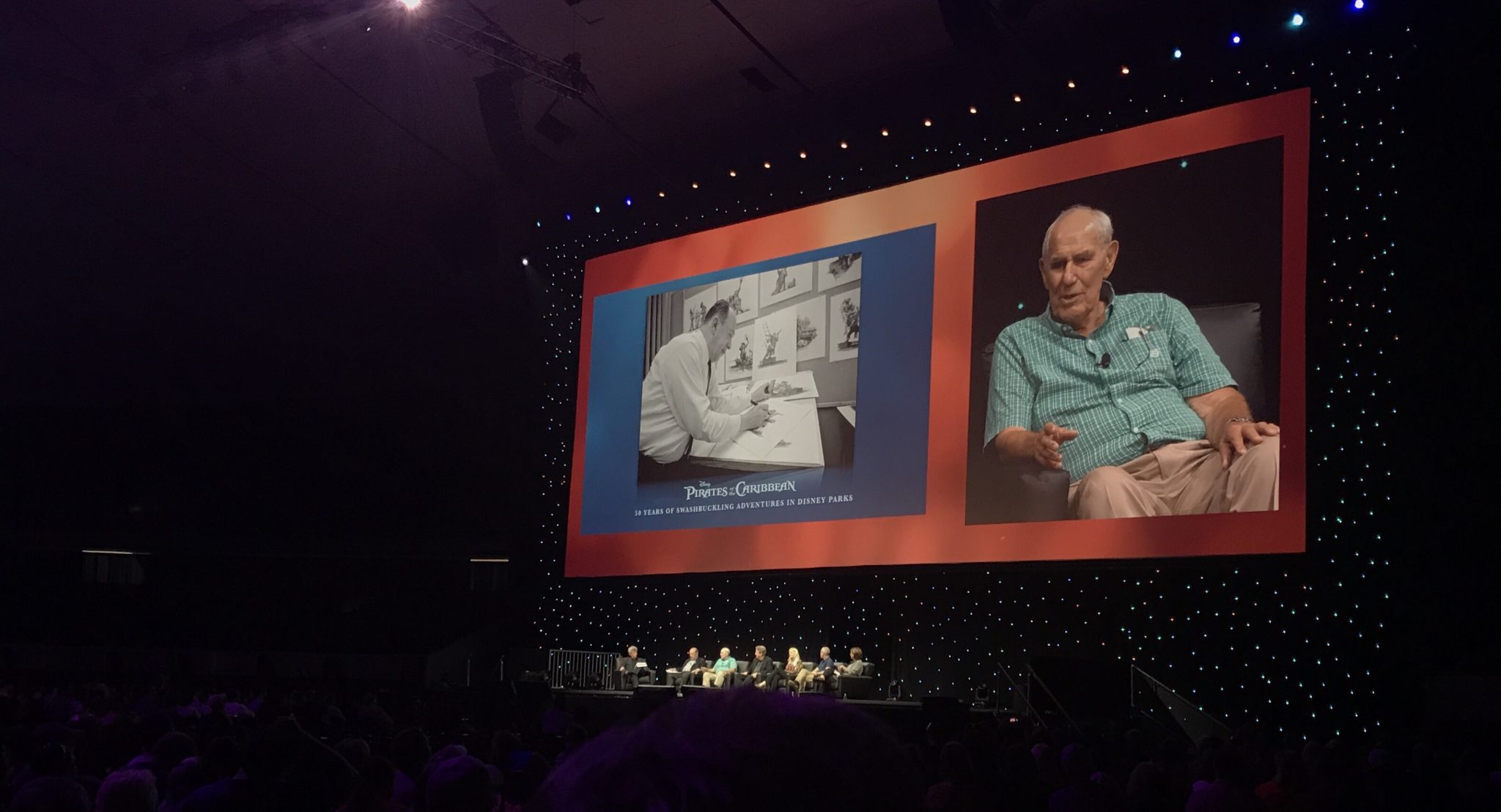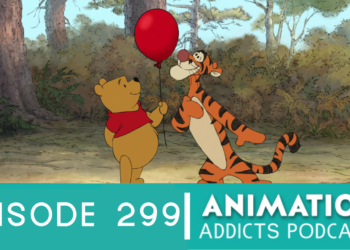
With a panel composed of the brilliant Imagineering minds that brought us, and still bring us, marauding tales of the high seas, Disney Parks celebrates 50 years of the beloved Pirates of the Caribbean ride, and its incarnations around the world.
The appeal of the Pirates of the Caribbean ride is undeniable, taking over three thousand fans an hour on a buccaneer adventure, capturing the awe of both the fans and the Imagineers involved with the ride themselves: Marty Sklar, Disney Legend and Imagineering Ambassador; Orlando Ferrante, Disney Legend and retired Imagineering Executive; Tony Baxter, Disney Legend and Imagineering Creative Consultant; Kim Irvine, Art Director at Disneyland Park for Walt Disney Imagineering; Luc Mayrand, Creative Executive at Shanghai Disney Resort for Walt Disney Imagineering; and Nancy Seruto, Creative Development Executive at Walt Disney Imagineering.
From the beginning, the ride was something new; as Sklar points out: “There’s only so many times you can go through the Tunnel of Love, right?” He believes the ride to be the ‘quintessential attraction in any park,’ an opinion that goes undisputed among the panel members. Ferrante and Baxter share an appreciation of the storytelling behind the ride, written by one Xavier Atencio, fondly remembered by all as ‘X’ and known to most Disney fans as the voice behind “Dead Men Tell No Tales,” within the original ride.
For Irvine and Mayrand, the ride appeals to the senses, and not only the practical senses, but the sense of real and magic combined, a feeling well-known around the Disney Parks. As Seruto succinctly puts it:
“The ride takes guests on an adventure you never want to end.”
Originally discussed as a walk-through attraction, the ride’s concept was forever changed after the Disney company’s excursion to the 1964 World’s Fair in New York. There was the technology to move a larger capacity of people through a ride, similar to It’s a Small World, and Pirates of the Caribbean became a boat ride capable of carrying almost double the expected rate of people per hour, then 1,500 people.
“We always felt that if that was what the show desired … that was our responsibility to deliver.”
Ferrante, quoted above, and Sklar both agree on Walt’s faith in the WED team, as the Imagineering department was then called, Irvine’s mother, Imagineer Leota Toombs (yes, that Leota), worked in the modeling department for Pirates of the Caribbean, creating prototypes from Marc Davis’ concept sketches – each model adhered to the WED crew, including animatronics designer Blaine Gibson; it was Gibson’s task to take Davis’ cartoon-ish sketches and balance them with Walt’s desire for realism.

Each Disney Park has its own Pirates, usually heavily based on the original ride, to the best of the Imagineering department’s abilities. For Disneyland Paris, says Baxter, that emulation required creative thinking and a look to the past for inspiration in order to ‘reclaim’ the second waterfall. Using an idea from an original sketch for Anaheim’s Disneyland, the Paris team brought the boat up a level, loading the passengers into the pirate’s fort, giving them the required space for second waterfall.
Shanghai Disneyland, too, required more innovation from the Imagineering team, working with cultural differences, larger space, and a storyline more involved with the films than the original ride. Mayrand and Seruto took it as an opportunity to present something different, as the movies had taken the ride into a new medium. As Mayrand said, they aimed to create “a continuous adventure that was as intense as the movie.”
Although the original ride, and its more related incarnations, maintain most of the classic story, the Disneyland ride continues to change and update with each passing year. Even refurbishments bring small changes according to Irvine, including a skeletal parrot companion in the captain’s quarters. A more significant change, aside from the film character inclusions a few years ago, is the upcoming removal of the bride auction scene. Unlike those booing in the audience, the panel was supportive of the change.
“Walt started changing things at Disneyland from the first day it opened.”
Sklar followed the resulting applause with, “It’s just part of the process,” just like the technological updates made to keep up with modern technology as it develops. Mechanical compliance has made a significant difference among the animatronics, ensuring there are no post-movement shudders when an animatronic character comes to a near-sudden stop, a development used both in Paris, for a daring swordfight, and in Shanghai as part of the seamless nature of the ride.
Shanghai’s Pirates of the Caribbean: Battle for Sunken Treasure – not only a land but a full cove dedicated to the Disney pirates – brings the new medium of film into the ride, seamlessly blending film screens with physical sets throughout, creating the “perfect mix of technology, art, and story,” according to Mayrand.
“The story drove the technology.”
Story remained all important, as the crew didn’t get hung up on using more sophisticated tools. Seruto remembers moving through the ride on a volunteer-propelled office chair, before a boat or even the water was in place. The Imagineering team strove to maintain the fun and magic of the original ride, working to keep this different ride still in the same legacy as the other Pirates of the Caribbean rides. In that spirit, Mayrand and Seruto pioneered an unusual water ceremony; secretly gathering samples of water from each of the other Pirates rides, the Shanghai ride was christened, changing the tone of the project entirely.
“Wow, this is real. We really are working on a Disney Pirates attraction.”

Of course, the panel all had their favorite moments on the original ride. Sklar is always amused by the pirate with his bare foot hanging down and the drunk pirate wallowing with the pigs, as the epitome of Marc Davis’ humor, while Ferrante simply loves the entire attraction. The rest of the panel, though impressed by the animatronic characters, also loved the animatronic animals – the scene with the cats (“Here, kitty, kitty.”), the amusing chickens, and several other animals featured through the ride.

The Pirates of the Caribbean rides continue to evolve and update over the years, expanding in story and technology, but still thrives from the original ride created by Walt Disney, Xavier Atencio, Marc Davis, Leota Toombs, and the rest of the WED department of Imagineers.






